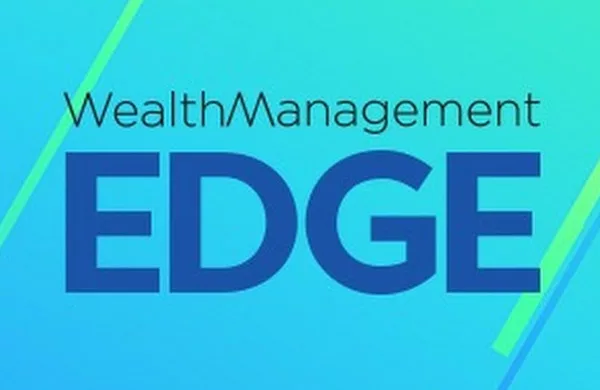In confusing times, it is easy to make mistakes. Are you making one now with your retirement plan?
You don’t need me to tell you that we live in difficult times. Yes, the economy is recovering, but there are still major challenges ahead. In all the confusion, it can be harder than ever to make good decisions, and easier than ever to make mistakes. Here are four mistakes you might be making right now with your retirement plan, and how to fix them:
- The risk of ignoring your risk tolerance
- Having the wrong stock strategy
- Having the wrong bond strategy, and
- Having the wrong retirement income timetable
Understand Your Financial Risk Tolerance
Recently, we did an entire show devoted to risk tolerance. That is how important it is right now. Risk tolerance is an assessment of how much risk you can handle. Some people are wired to handle a lot. Others can take very little. As far as investing goes, risk tolerance relates to your ability to handle potential losses. If you are investing for growth in the stock market, how much market shrinkage can you tolerate before you panic? Your natural attitude toward risk is only one factor in determining your investment risk tolerance. Others include:
- Your age and stage of life
- Your retirement timeline
- Your cumulative assets
- And, of course, your individual retirement goals.
Why is ignoring risk tolerance one of the biggest mistakes you could be making right now? Well, one reason is that these are very uncertain and deceptive times.Yes, the recovery from Covid-19 is going well, and the stock market has hit several new record highs. However, behind that bright picture lay a lot of huge unknowns. Inflation, interest rates, debt, the prospect of corporate tax hikes. Those are just a few of the issues that could quickly undercut the recovery and investor confidence. The point is, you may be carrying more risk than you realize, meaning more risk than is right for your retirement plan with all the issues factored in. For example, maybe your mental risk tolerance is very high, so you’re fine with your current allocation on that basis. But have you considered how a big financial loss right now might affect your retirement timeline or your goals? Would you have to adjust your goals, or delay your retirement? Assessing your risk tolerance is an important key to having a financial strategy that is right for your stage of life, your goals, and your timeline – now more than ever.
Mistakes in Stock Strategy
Naturally, there is no cookie-cutter financial strategy that’s right for everyone. However, the fact is, most of us use the same basic strategy for investing in the stock market throughout our working lives.Typically, that strategy is to grow your savings by investing for capital gains in stocks and mutual funds. It’s a growth-based strategy, and for most people it makes sense when you’re in your 30s and 40s. At that point you’re in the growth and accumulation stage of life. Retirement is still a long way off, and if your market growth turns to shrinkage, you still have time to recover your losses. But, as I often point out, once you’re over 50, you’re now transitioning from the growth stage to the income stage. Suddenly, retirement isn’t so far off, and you’ll soon need your assets to generate income.
Does that mean you should automatically get out of the stock market? Not necessarily. But it does mean you should revisit your stock strategy to make sure it’s still the right one. Since you’re transitioning to the income stage, now might be the right time to shift from a growth stock strategy to a value stock strategy geared toward dividend income. In my experience, the right value stock strategy can help lower your stock market risk and give you a more practical way to invest in the market as retirement nears. In addition, the dividend-paying value strategy is, like all income strategies, a bird-in-the-hand approach that allows you to keep growing your portfolio organically. That’s a strategy that might work especially well in today’s market.
Mistakes in Bond Strategy
To put it simply, the mistake is simply not having one. If that’s the case, there could be two reasons for it. The first is that you’re putting too much stock, so to speak, in the words of media bond-bashers. This is an old story when it comes to the financial media. Whenever interest rates are low, the bond-bashers start bashing, based on the simple rule that when interest rates rise, bond values fall. So, when interest rates have no place to go but up, it’s easy to cast bonds as bad investments. The bashers have been especially loud recently because interest rates have, in fact, risen since the start of the year.
From January to April, this did create a headwind for bond investors, plus a good opportunity for the bashers to say, “I told you so!” However, none of this is nearly as simple as they’d like you to believe. For one thing, interest rates aren’t the only thing that affects bond values. I’ve explained before how something called credit spread compression, which also occurs when interest rates rise, creates a natural softener that limits losses for many bond investors. Even more importantly, when you’re investing in individual bonds, any loss due to rising interest rates is only a paper loss. That’s because you typically have a contract protecting the face value of your bond if you hold it to maturity, assuming there haven’t been any defaults. In the meantime, your income return is unaffected, which is really the most important point when you’re retired or close to it. The other reason you might be making the mistake of not having a bond strategy is that you’re not actually invested in bonds, but in bond funds.
The Wrong Retirement Income Timeline
If you’ve identified your retirement goals, you probably know when you plan to retire. That’s good, but it’s just as important to know when the time is right to switch your financial strategy from growth to income. Let’s say you plan to retire in five years. However, your plan is to invest primarily for growth, hoping to get 8 percent total return for those five years, with only 1.5 percent of it coming from dividend income. Then, right after you retire, you’ll start investing for 4 percent. That’s how a lot of people think it’s done. The problem is, you might get that 8 percent growth, but you might not. Even worse, the market could drop by 50 percent and take seven years to recover. That’s happened twice since 2000, and with so much uncertainty in today’s market, anything’s possible. But let’s say your plan did work, you got that 8 percent total return, and you had about a million bucks to start with. Here’s how the math works out:
You’d end up getting about $58 thousand dollars a year once you converted to 4 percent income. In other words, 1 million at 8 percent total return for five years leads to $58 thousand dollars of income. Now let’s say the worst did happen and the market took that drop. You would probably no longer want to switch to income after retirement because you’d want to try and recover your losses.
In that case, you could count on getting just $16 thousand dollars of annual income instead of $58 thousand. Why? Well, that calculation is based on your 1.5 percent dividend yield, which is now the only known factor in your plan. So, $1 million at 1.5 percent dividend for 5 years leads to $16 thousand dollars of income.
What about instead of waiting, you change your timeline and start investing for 4 percent income today. In that case, the math goes like this: $1 million at 4 percent interest-slash-dividends for 5 years leads to $48 thousand dollars of annual income. With that plan, you would start getting that income return now, regardless of what the market does.
The Takeaway
As the saying goes: we all make mistakes. That’s why pencils have erasers. However, some mistakes are easier to erase than others. When they’re financial mistakes, the consequences can be dire, especially when you’re retired or close to retirement. We have identified four mistakes you might be making right now with your retirement plan, and how to correct them. We covered the importance of truly knowing your risk tolerance and making sure it’s aligned with your strategy. We talked about the importance of having the right stock strategy for your retirement goals and stage of life. We talked about having the right bond strategy, which, for many over-50 investors, means one built around individual bonds and bond-like instruments. Finally, do not underestimate the importance of having a retirement income timeline that aligns with your goals and is based more on known factors than on one big unknown. If you are feeling unsure about your retirement readiness, I encourage you to check out our free Financial Diagnostic.






